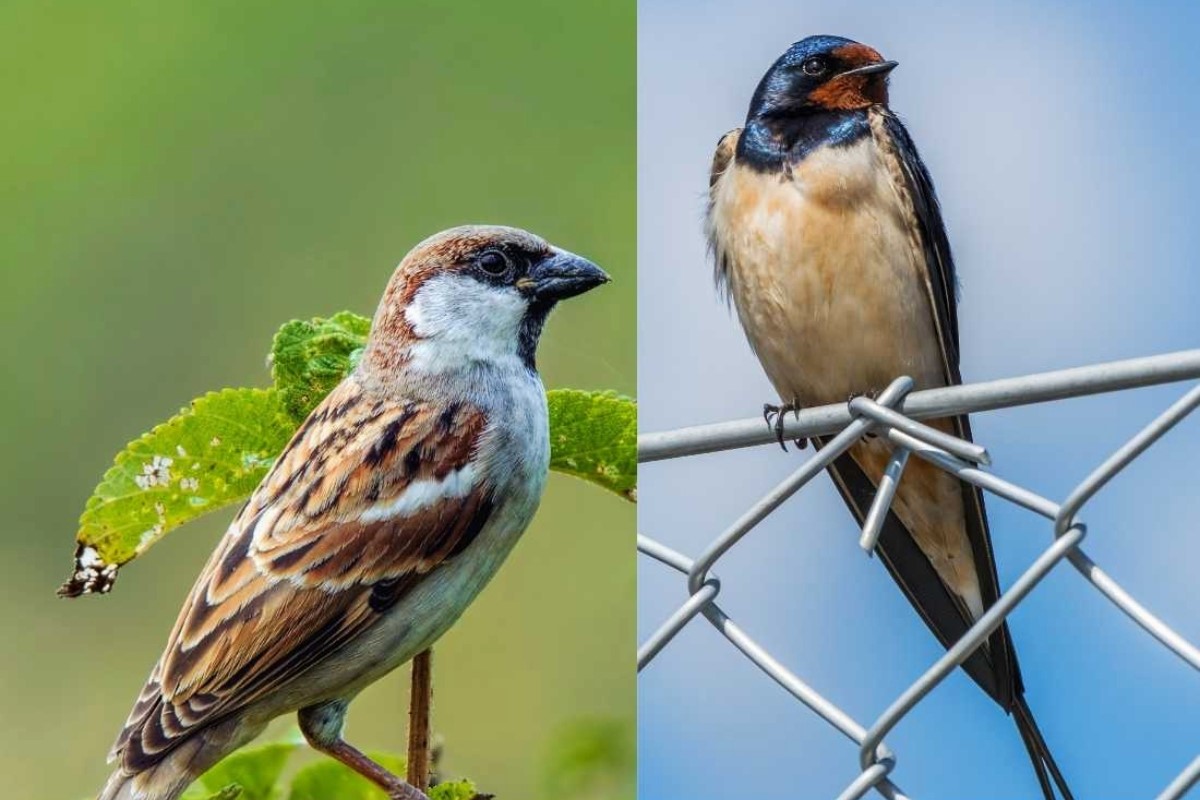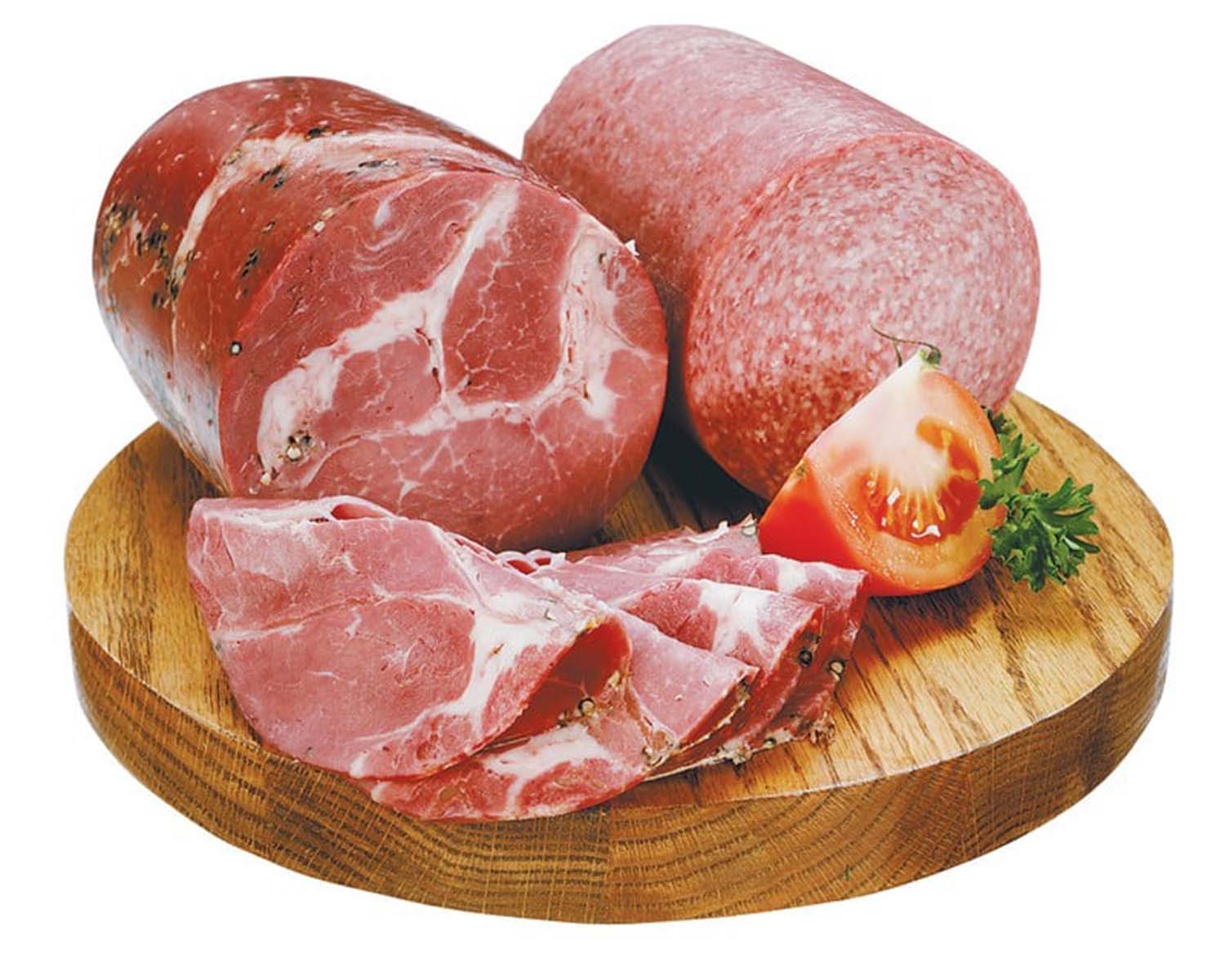Home>Science>The Surprising Differences Between Swallows And Sparrows! Must Read!


Science
The Surprising Differences Between Swallows And Sparrows! Must Read!
Modified: March 3, 2024
Discover the fascinating distinctions between swallows and sparrows in this insightful science article. Uncover surprising facts and must-read information!
(Many of the links in this article redirect to a specific reviewed product. Your purchase of these products through affiliate links helps to generate commission for Noodls.com, at no extra cost. Learn more)
Table of Contents
Introduction
Birds have always captivated the human imagination with their grace, beauty, and remarkable diversity. Among the most beloved and iconic avian species are swallows and sparrows. While both birds may appear similar at first glance, they possess distinct differences that set them apart in terms of physical characteristics, habitat, behavior, diet, and migration patterns. Understanding these differences not only enriches our knowledge of the natural world but also deepens our appreciation for the intricate tapestry of life that surrounds us. In this article, we will delve into the surprising disparities between swallows and sparrows, shedding light on the unique traits and behaviors that define each species. So, let's spread our wings and embark on a fascinating journey into the captivating realm of these remarkable birds!
Physical Characteristics
When it comes to physical characteristics, swallows and sparrows exhibit notable differences that distinguish them from one another. Swallows, known for their sleek and aerodynamic build, are adorned with long, pointed wings and a deeply forked tail. These distinctive features enable them to perform agile aerial maneuvers, effortlessly darting through the sky in pursuit of flying insects. Their streamlined bodies and elegant wings exemplify the epitome of avian grace and agility.
In contrast, sparrows boast a more robust and compact physique, characterized by a short, conical bill, rounded wings, and a stout, seed-cracking beak. Their earthy plumage, often adorned with subtle patterns and markings, allows them to blend seamlessly into diverse habitats, from urban landscapes to rural fields. While swallows are renowned for their aerial prowess, sparrows are celebrated for their adaptability and resilience in a variety of environments.
Furthermore, the coloration of these birds sets them apart in striking ways. Swallows are known for their iridescent blue or metallic green upperparts, which shimmer in the sunlight, accentuating their elegance and beauty. Their underparts often feature shades of white or buff, creating a striking contrast. On the other hand, sparrows exhibit more subdued hues, with brown, gray, and streaked patterns dominating their plumage. These earthy tones serve as effective camouflage, allowing sparrows to evade predators and thrive in their natural habitats.
In addition to their physical attributes, the size of these birds also differs significantly. Swallows typically possess a slender and elongated frame, measuring around 6 to 7 inches in length. In contrast, sparrows are more compact, averaging 5 to 6 inches in length. This variation in size contributes to their distinct silhouettes and overall presence in the avian world.
In summary, the physical characteristics of swallows and sparrows showcase the remarkable diversity and adaptability of avian life. From the sleek, aerial prowess of swallows to the resilient, earth-toned plumage of sparrows, each species embodies a unique set of traits that reflect their evolutionary adaptations and ecological niches. Understanding these distinctions enriches our appreciation for the intricate beauty of the natural world and the wondrous array of avian marvels that grace our skies.
Habitat and Behavior
Swallows and sparrows exhibit distinct habitat preferences and behavioral patterns that reflect their evolutionary adaptations and ecological roles. Let's delve into the fascinating realm of their habitats and behaviors to gain a deeper understanding of these remarkable avian species.
Swallows:
Swallows are renowned for their affinity for open spaces, particularly near water bodies. They are often found in diverse habitats such as grasslands, wetlands, and coastal areas. Their exceptional aerial agility allows them to thrive in these environments, where they can effortlessly pursue flying insects, their primary source of food. Swallows are also known for their gregarious nature, often congregating in large flocks, especially during migration. Their communal behavior and synchronized flight patterns create mesmerizing aerial displays, captivating observers with their graceful choreography.
Sparrows:
In contrast, sparrows are highly adaptable birds that have successfully integrated into human-altered landscapes. They are commonly found in urban and suburban areas, where they capitalize on human habitation and agricultural activities. Sparrows display a remarkable ability to coexist with human populations, often nesting in buildings, parks, and gardens. Their sociable nature is evident in their communal roosting and foraging behaviors, as they form cohesive groups to seek food and shelter. Additionally, sparrows are known for their distinctive vocalizations, filling urban environments with their melodious chirps and calls, adding a touch of natural serenade to everyday life.
Behavioral Contrasts:
The behavioral disparities between swallows and sparrows are striking. Swallows are renowned for their aerial prowess, spending a significant portion of their time in flight as they hunt for insects. Their acrobatic flights and intricate aerial maneuvers exemplify their specialized adaptation for aerial foraging. In contrast, sparrows exhibit a more terrestrial lifestyle, often foraging on the ground for seeds, grains, and small invertebrates. Their ground-feeding habits and adeptness at exploiting human-provided food sources showcase their resourcefulness and adaptability.
Habitat Preferences:
Swallows and sparrows also differ in their habitat preferences. While swallows favor open, expansive environments with access to water, sparrows thrive in diverse settings, from urban centers to agricultural landscapes. The adaptability of sparrows to human-modified habitats has enabled them to establish thriving populations in close proximity to human settlements, showcasing their remarkable resilience and ability to capitalize on anthropogenic changes to the environment.
In essence, the habitat preferences and behavioral patterns of swallows and sparrows offer a captivating glimpse into the diverse ways in which these avian species have carved out their niches in the natural world. From the aerial prowess of swallows to the sociable adaptability of sparrows, each species embodies a unique set of traits that reflect their evolutionary success and ecological significance. By appreciating these distinctions, we gain a deeper appreciation for the intricate tapestry of avian life and the wondrous array of behaviors and habitats that enrich our natural surroundings.
Diet and Feeding Habits
When it comes to diet and feeding habits, swallows and sparrows exhibit remarkable differences that underscore their specialized ecological roles and foraging strategies. Let's delve into the intriguing realm of their dietary preferences and feeding behaviors to gain a deeper understanding of these fascinating avian species.
Swallows:
Swallows are consummate aerial foragers, specializing in capturing flying insects on the wing. Their diet primarily consists of a diverse array of airborne prey, including mosquitoes, flies, beetles, and other small insects. Renowned for their agile flight and swift aerial maneuvers, swallows effortlessly navigate the skies, deftly intercepting and consuming their elusive prey. Their long, pointed wings and streamlined bodies are finely tuned for rapid, acrobatic flight, enabling them to pursue and capture insects with remarkable precision.
Sparrows:
In contrast, sparrows exhibit a more diverse dietary repertoire, reflecting their adaptable foraging strategies. While they also consume insects, especially during the breeding season to provide protein-rich sustenance for their young, sparrows are primarily granivorous, with seeds forming a substantial portion of their diet. Their stout, conical beaks are well-suited for cracking open seeds, allowing them to exploit a wide range of plant resources. In urban environments, sparrows adeptly capitalize on human-provided food sources, scavenging for crumbs and seeds to supplement their diet.
Feeding Contrasts:
The dietary disparities between swallows and sparrows are evident in their contrasting feeding behaviors. Swallows are aerial specialists, spending a significant portion of their time in flight as they skillfully intercept and consume flying insects. Their adeptness at capturing agile prey in mid-air showcases their remarkable agility and precision. In contrast, sparrows exhibit more terrestrial feeding habits, foraging on the ground for seeds and grains, often in communal groups. Their resourcefulness in exploiting diverse food sources, including human-provided offerings, underscores their adaptability and opportunistic feeding behaviors.
Ecological Significance:
The dietary preferences and feeding habits of swallows and sparrows play pivotal roles in ecological processes, influencing insect populations, seed dispersal, and ecosystem dynamics. Swallows contribute to insect control, helping regulate insect populations and maintaining ecological balance. Sparrows, as granivorous birds, play a role in seed dispersal, aiding in the propagation of plant species through their foraging activities. Their diverse diets and foraging behaviors underscore the intricate interplay between avian species and their ecological communities.
In essence, the dietary disparities and feeding habits of swallows and sparrows illuminate the diverse ecological niches and foraging strategies that define these avian species. From the aerial prowess of swallows to the adaptable feeding behaviors of sparrows, each species contributes to the rich tapestry of ecological interactions, underscoring the interconnectedness of avian life with the natural world. Understanding these dietary variances enhances our appreciation for the complex web of ecological relationships that shape our environment.
Mating and Reproduction
Mating and reproduction represent pivotal phases in the life cycles of swallows and sparrows, offering captivating insights into their courtship rituals, nesting behaviors, and parental care strategies. These aspects of avian life not only showcase the intricacies of species-specific behaviors but also underscore the vital role of reproduction in perpetuating their populations.
Swallows:
During the mating season, swallows engage in elaborate courtship displays, characterized by aerial acrobatics and vocalizations. Males showcase their agility and prowess through captivating flight maneuvers, aiming to attract potential mates. Once a pair bond is established, swallows construct intricately woven cup-shaped nests, often situated in sheltered locations such as barns, sheds, or under eaves. The meticulous construction of nests reflects the dedication of these birds to creating secure environments for their offspring. Female swallows lay a clutch of eggs, typically ranging from 3 to 7 eggs, and both parents share the responsibilities of incubation and feeding. The arrival of fledglings marks a period of intense parental care, with both parents diligently providing nourishment and protection until the young birds are ready to embark on their maiden flights.
Sparrows:
In contrast, sparrows exhibit communal nesting behaviors, with several pairs often nesting in close proximity. Their courtship rituals involve vocalizations and displays of plumage, as males seek to attract potential mates. Sparrows construct dome-shaped nests, often concealed within dense vegetation or in human-made structures. The female sparrows lay a clutch of eggs, typically ranging from 3 to 6 eggs, and both parents collaborate in incubating the eggs and rearing the hatchlings. Sparrows demonstrate a remarkable degree of parental investment, diligently tending to the needs of their offspring and fostering their development through the provision of food and protection.
Reproductive Significance:
The mating and reproductive behaviors of swallows and sparrows underscore the significance of these avian species in shaping ecological communities and maintaining population dynamics. Their nesting activities contribute to the structuring of habitats and the propagation of avian populations, influencing the diversity and abundance of bird species within ecosystems. Furthermore, the collaborative efforts of parental care exhibited by both swallows and sparrows highlight the importance of nurturing the next generation, ensuring the survival and prosperity of their offspring.
In essence, the mating and reproductive behaviors of swallows and sparrows offer a captivating glimpse into the intricate tapestry of avian life, showcasing the diverse strategies employed by these birds to perpetuate their populations and contribute to the rich fabric of ecological interactions. By delving into these aspects of their life cycles, we gain a deeper appreciation for the remarkable adaptations and behaviors that define these avian marvels.
Migration Patterns
Migration represents a remarkable phenomenon in the avian world, showcasing the awe-inspiring journeys undertaken by birds across vast distances in response to seasonal changes and resource availability. Both swallows and sparrows exhibit distinct migration patterns that underscore their remarkable navigational abilities and adaptive strategies. Let's embark on a captivating exploration of the migration patterns of these remarkable avian species, shedding light on the intricacies of their seasonal movements and the ecological significance of their migratory behaviors.
Swallows:
Swallows are renowned for their extraordinary migratory feats, embarking on extensive journeys that span thousands of miles. These aerial marvels undertake biannual migrations, traveling from their breeding grounds in temperate regions to wintering areas in more hospitable climates. In North America, the iconic Barn Swallows and Cliff Swallows embark on remarkable migrations to Central and South America, traversing impressive distances to reach their overwintering grounds. The timing and precision of their migrations are finely tuned to coincide with the availability of abundant insect prey, ensuring their survival during the lean winter months.
The migratory routes of swallows are characterized by their resilience and navigational prowess, with these birds navigating diverse landscapes and encountering a myriad of environmental challenges along their migratory pathways. Their ability to traverse open oceans, negotiate complex weather systems, and locate specific overwintering sites exemplifies their remarkable adaptability and innate navigational abilities. The return journey to their breeding grounds marks another extraordinary feat, as swallows once again undertake arduous migrations to reunite with their nesting sites, where they will engage in courtship, nesting, and raising the next generation.
Sparrows:
In contrast to the extensive migrations of swallows, many sparrow species exhibit more localized or sedentary behaviors, with some populations residing in their breeding territories year-round. However, certain sparrow species, such as the White-throated Sparrow and the Dark-eyed Junco, undertake remarkable seasonal migrations, with individuals from northern breeding grounds venturing southward to overwinter in more temperate regions. These migratory movements are driven by the need to access food resources and favorable wintering habitats, ensuring the survival of these birds during the harsh winter conditions in their northern breeding ranges.
The migratory behaviors of sparrows showcase their ability to adapt to changing environmental conditions, utilizing seasonal movements to exploit diverse habitats and resources. Their migrations contribute to the ecological connectivity of distinct regions, as sparrows play a role in seed dispersal and ecosystem dynamics across their breeding and wintering ranges. By undertaking these seasonal journeys, sparrows contribute to the rich tapestry of avian migrations, highlighting the interconnectedness of diverse habitats and the vital role of migratory behaviors in sustaining avian populations.
In summary, the migration patterns of swallows and sparrows offer a captivating glimpse into the diverse strategies employed by these avian species to navigate seasonal changes and ensure their survival. From the extensive transcontinental migrations of swallows to the more localized seasonal movements of sparrows, each species embodies a unique set of migratory behaviors that reflect their ecological adaptations and the intricate web of avian life. By unraveling the mysteries of their migrations, we gain a deeper appreciation for the resilience and resourcefulness of these remarkable birds as they embark on their extraordinary journeys across the changing landscapes of our planet.
Conclusion
In conclusion, the captivating realm of swallows and sparrows unveils a tapestry of remarkable differences and unique traits that define these beloved avian species. From the sleek, aerodynamic prowess of swallows to the adaptable resilience of sparrows, each bird embodies a distinct set of physical characteristics, habitat preferences, behavioral patterns, dietary strategies, reproductive behaviors, and migratory feats that showcase their evolutionary adaptations and ecological significance.
The physical characteristics of swallows, characterized by their elegant wings, deeply forked tails, and iridescent plumage, stand in stark contrast to the earthy hues and robust build of sparrows. These distinctive features reflect their specialized adaptations for aerial agility and terrestrial resilience, underscoring the diverse ecological niches they inhabit.
Furthermore, the habitat preferences and behavioral patterns of swallows and sparrows offer a captivating glimpse into the diverse ways in which these avian species have carved out their niches in the natural world. From the open expanses favored by swallows to the urban landscapes embraced by sparrows, each species showcases a unique affinity for specific environments, highlighting their adaptability and resourcefulness.
The dietary disparities and feeding habits of swallows and sparrows underscore the diverse ecological roles they play, from insect control to seed dispersal, shaping the dynamics of their respective ecosystems. Their specialized foraging strategies and dietary preferences exemplify the intricate interplay between avian species and their environments, contributing to the complex web of ecological relationships.
Moreover, the mating and reproductive behaviors of swallows and sparrows illuminate the vital role of parental care and nesting activities in perpetuating their populations. Their courtship rituals, nest construction, and collaborative parenting efforts underscore the significance of reproductive strategies in shaping avian communities and sustaining their numbers.
Finally, the migration patterns of swallows and sparrows showcase the remarkable navigational abilities and adaptive strategies employed by these birds to navigate seasonal changes and access vital resources across vast distances. From the transcontinental migrations of swallows to the localized movements of sparrows, each species contributes to the rich tapestry of avian migrations, underscoring the interconnectedness of diverse habitats and the vital role of migratory behaviors in sustaining avian populations.
In essence, the surprising differences between swallows and sparrows offer a captivating exploration of the intricate beauty and ecological significance of these remarkable avian species. By unraveling the mysteries of their distinct traits and behaviors, we gain a deeper appreciation for the rich diversity of avian life and the wondrous array of marvels that grace our skies.












